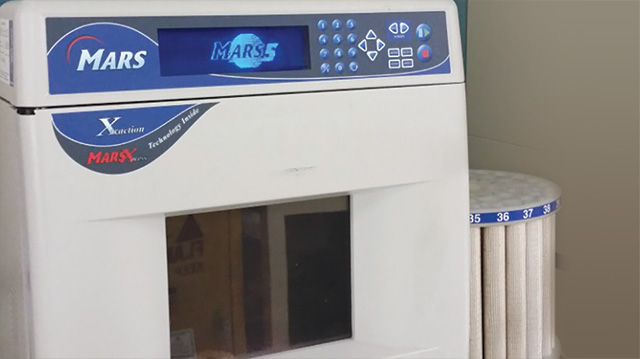An Alternative Method for PCB Extraction
Absolute Resource Associates (ARA), an environmental firm in Portsmouth, NH, has found that performing Subpart Q studies for clients has been well worth the time and effort
 Some of the benefits of one alternative to Soxhlet extraction, microwave digestion, include a reduction in extraction time as well as reduced energy and chemical usage.
Some of the benefits of one alternative to Soxhlet extraction, microwave digestion, include a reduction in extraction time as well as reduced energy and chemical usage.
Problem: The Environmental Protection Agency (EPA) Region 1 requires that Soxhlet extraction (EPA Method 3540C) be performed for polychlorinated biphenyl (PCB) analysis, as per the Toxic Substances Control Act (TSCA). However, most people involved in the cleanup and disposal of PCBs don’t realize that published, approved, less expensive, and “greener” methods are available. Anyone who deals with PCBs should be aware that the Soxhlet method for extraction is not the only method, and certainly not the best method, that can effectively extract PCB material from samples.
Solution: Although not specifically mentioned in the TCSA regulations, the EPA has approved other methods that are more efficient in terms of time, labor, materials, energy, and waste. The problem is that in order to get EPA approval to use an alternate method for extraction, an extensive study is required to be initiated on a project specific basis. This study must be initiated by the contractor that is hiring the laboratory. Due to the process required to get an alternative study approved, tight deadlines, and fear of the unknown, contractors generally just ask the laboratory to perform the (expensive, cumbersome, and less green) Soxhlet extraction.
Absolute Resource Associates (ARA), an environmental firm in Portsmouth, NH, has found that performing Subpart Q studies for clients has been well worth the time and effort, and they are hopeful that word gets out to the industry that alternative methods are sometimes a much better option. ARA has reported reduced waste, reduced energy, reduced turnaround time (TAT), reduced mobilization on site, and millions of dollars in savings for clients by utilizing alternative methods.
Benefits for one alternative method, microwave extraction:
- Reduces extraction time (hours versus minutes)
- Reduces project completion time
- Saves customer money on field related expenses
- Reduces energy usage by over 99%
- Reduces chemical usage by over 80%
- Increases capacity to extract more samples
ARA had the opportunity to discuss this issue with U.S. Senator Shaheen’s (D-NH) office, and gained the support of special assistant for policy and projects, Sarah Holmes. Ms. Holmes facilitated a conference call with EPA Headquarters and EPA Region 1, where ARA pointed out that some regulations are outdated, energy inefficient, and waste generating. ARA asked that the EPA provide more support to environmental laboratories and the folks who are making real efforts to reduce energy and waste costs. Although the chances of getting an update into the Federal Register are slim, it’s becoming clear that considering alternatives to the prescribed extraction method has significant merit. It’s important to keep the conversation going about the benefits of Subpart Q , and get real options into the hands of those responsible for cost effective, environmentally favorable cleanup of PCB contaminated properties.
For more information, please visit, www.absoluteresourceassociates.com/services/pesticides.cfm and www.law.cornell.edu/cfr/text/40/part-761/subpart-Q

